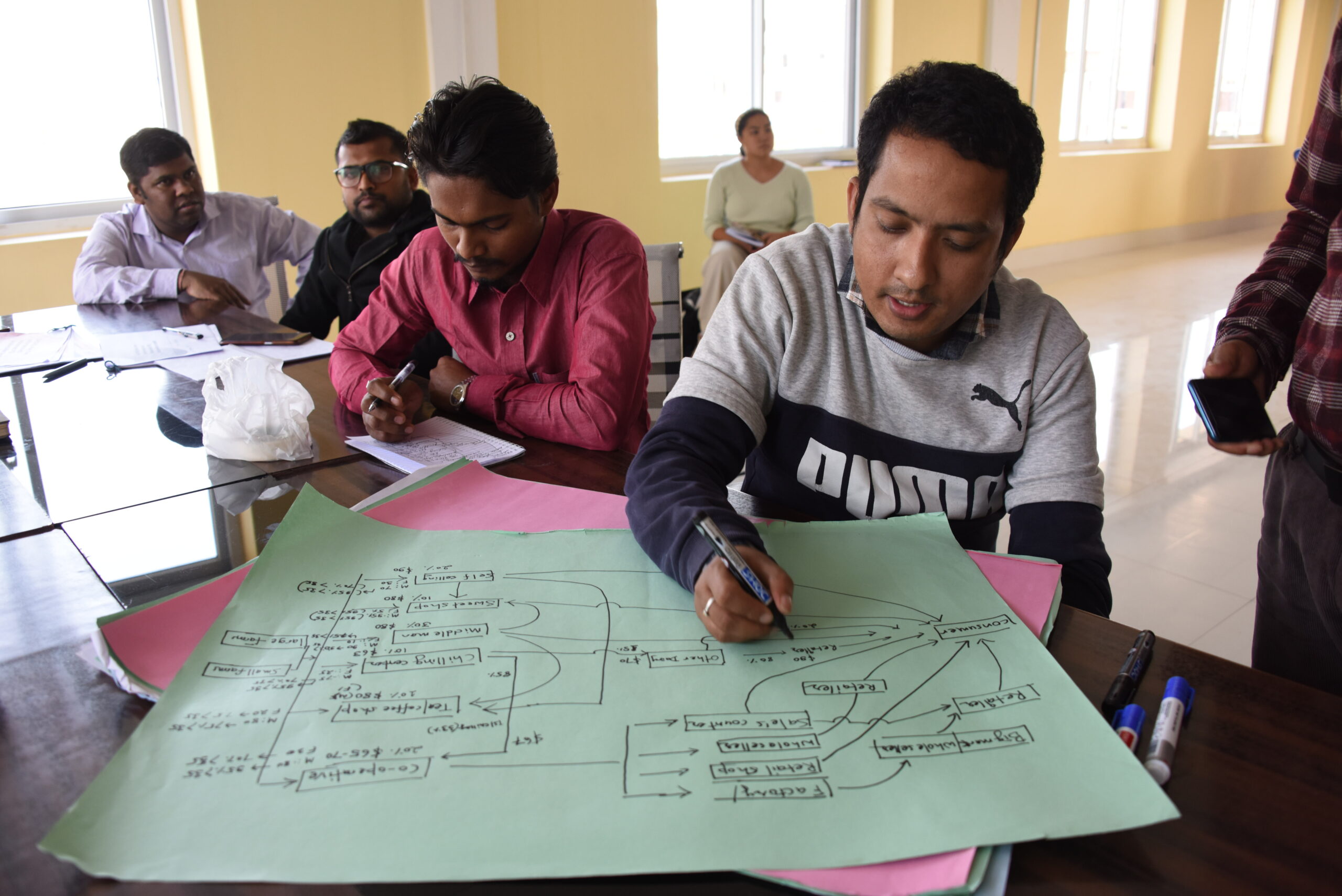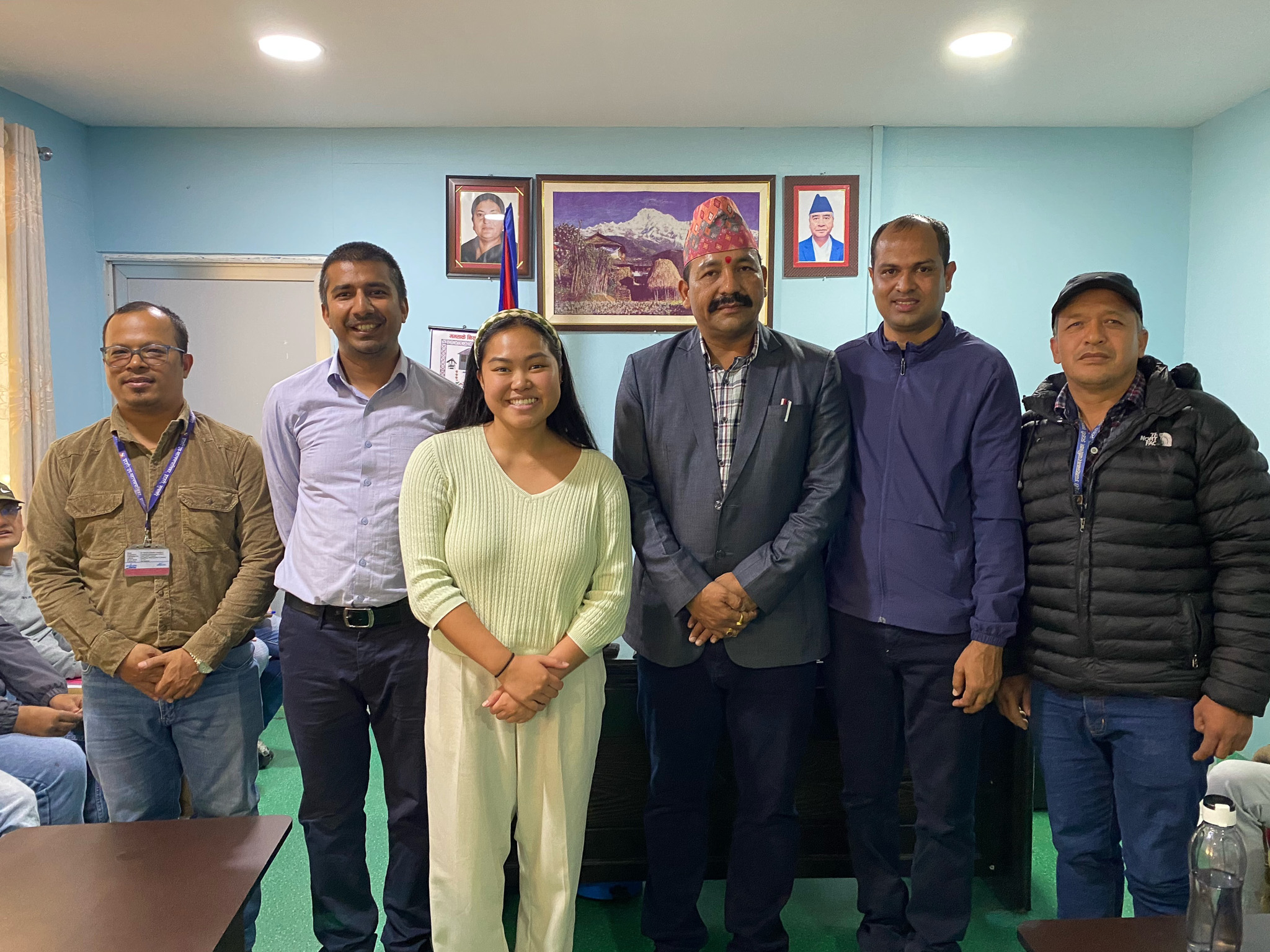Building better buffalo farming in rural Nepal
In Nepal, farmers struggle to increase buffalo milk yields to boost productivity and the resilience of buffalo value chains. One way to improve productivity is to introduce improved technologies like artificial insemination (AI), a cost-effective method to improve genetic potential in buffalo. However, AI alone will not strengthen buffalo value chains unless packaged with other innovations and technologies like feed and health. Collaboration among international, national and local entities is necessary to develop innovative packages and implement systems to comprehensively improve the value chain while ensuring community acceptance.
CGIAR’s Sustainable Animal Productivity for Livelihoods, Nutrition and Gender Inclusion (SAPLING) initiative has been developing such packages, with a program called SAPLING Bhaisi (meaning buffalo in the Nepali language), which aims to improve livelihoods through more resilient buffalo value chains. Co-ownership of the project through national and local partnerships is a crucial element of SAPLING Bhaisi’s design. Therefore, SAPLING, through the International Livestock Research Institute (ILRI), in collaboration with the Ministry of Agriculture and Livestock Development (MoALD), Provincial Ministries and the Nepal Agricultural Research Council (NARC) has partnered with rural municipalities and dairy cooperatives to co-create demand-driven innovation packages that will lead to productivity and resilience-enhancing, low-emissions technologies and the institutional arrangements necessary for their adoption.
Padmakumar Varijakshapanicker, the ILRI country representative for Nepal, stressed the importance of ILRI’s in-country partnerships:
“Partnership with the right public and private sector national organizations will result in sustainability of interventions and lead to large-scale uptake of technologies.”

South-South cooperation between Kenya, Tanzania and Nepal
A guiding principle of SAPLING is to facilitate South-South cooperation. For this reason, SAPLING has jointly planned its dairy value chain components in Kenya, Tanzania and Nepal. This will allow for continuous exchange amongst country teams and partners to share and quickly learn from implementation experiences, building on results from previous projects. For instance, expertise from east Africa has been supporting the SAPLING Bhaisi project in improving the institutions and processes involved with genetic improvement. In the project’s early stages, east Africa staff reviewed Nepal policies to assess the need for capacity development to promote genetic improvement programs successfully.
In addition, from 26 November to 3 December 2022, representatives from NARC, the Department of Livestock Services and Heifer International, partnering with SAPLING in Nepal, travelled to Kenya to exchange knowledge with ILRI scientists to improve livestock productivity in the Global South.
Nepali geneticist Neena Amatya Gorkhali, chief of the Nepal Animal Breeding and Genetics Research Centre at NARC, expressed her feelings after travelling to Kenya and visiting working Kenyan dairy cooperative systems that have adapted the SAPLING model:
“So, when I visited Kenya, I was really overwhelmed with how the people working there, especially the cooperatives, are very much into the project. They know their responsibilities, and not only that, but other partners, like the local government, own the project. Hopefully, this model can work in Nepal as well.”
The Nepal Agricultural Research Council (NARC)
SAPLING Bhaisi’s national partnership with NARC has been critical for learning from existing programs addressing animal productivity in Nepal. NARC and the National Livestock Breeding Office (NLBO) had dual ownership of the now-completed Dairy Animal Improvement Program (DAIP), which aimed to improve productivity in buffalo and cattle. After DAIP ended, NARC remained responsible for building the genetic database for the country’s buffalo population. Therefore, they were eager to partner with SAPLING Bhaisi in adapting and implementing the dairy genetics data platform developed by ILRI. The platform collects genetics data to inform breeding and offers specific dairy animal health advice when bundled in an innovation package. The platform also addresses NARC’s other interests in transforming the buffalo meat value chain and conserving indigenous buffalo breeds.
Gorkhali also shared how SAPLING Bhaisi would fill the gaps that DAIP had when addressing buffalo productivity in Nepal:
“So now, with this genetics data platform, we think it will help farmers become more aware of the importance of breeding animals. Calves born from high-yielders or fast growers can be kept as future breeding animals. After improved breeds are connected to the market economy, farmers will have better livelihoods.”
Furthermore, SAPLING facilitated the import of improved forages to Nepal and has been supporting NARC in conducting multi-location trials to determine the benefits of these forages in the local context.
Rural municipalities and dairy cooperatives
Along with national partners, SAPLING Bhaisi partnered with rural municipalities and dairy cooperatives to implement the innovation packages at the farm level, especially conducting fertility management camps and establishing village livestock promoters (VLP) at the cooperative level. Since the program launch last year, ILRI has signed a three-way Letter of Understanding (LoU) with twelve rural municipalities and their local milk producer cooperatives. The LoUs state that ILRI, the rural municipal government and the dairy cooperative agree to take collaborative action to improve the buffalo value chain through joint operations within the municipality. LoUs are effective for two years; all signers are expected to contribute financially. For example, for the pilot fertility clinic held in December 2022 in Itahari, Nepal, ILRI provided knowledge-based support for veterinarians, veterinary technicians and village livestock promoters, the Itahari municipality provided the medicine and medical equipment and the Itahari dairy cooperative covered transport costs.
Hem Karna Paudel, mayor of Itahari, believes that the agreement will benefit the municipality:
“The thing I like about this project is that it is bringing new technology to livestock production. We have money but need skill. I expect ILRI will bring new technology to support farmers in sustainable production.”

SAPLING has been promoting production enhancing technologies and training individuals to use various tools and approaches. As part of this, ILRI supported the visit of 15 Nepalese researchers to the Guru Angad Dev Veterinary and Animal Sciences University in India for a joint training on buffalo fertility improvement.
Subhash Chandra Chaudhary, the Itahari Municipality veterinary officer and one of those ILRI supported to attend the training, shared his initial thoughts on SAPLING:
“The SAPLING project will be good because it directly involves the farmers, cooperatives and municipalities like us. Therefore, farmers are directly benefiting, so that is the best thing.”
SAPLING Bhaisi is testing whether value chain supporters like rural municipalities and dairy cooperatives can implement SAPLING’s innovation packages, brought to farmers through the VLPs, and if successful uptake of innovation packages can increase buffalo productivity to a great extent. By staggering the roll-out of the VLP program, SAPLING will be able to accurately determine how farmers’ interaction with their VLPs will affect their farming practices, their use of inputs and the productivity of their buffaloes.
After learning about SAPLING, two provinces have already approached the ILRI team to adopt the SAPLING model (the co-design and implementation of research/development interventions to improve productivity by instituting mechanisms for integrated delivery of technologies, inputs and services and linking research and development) in their provinces with their own resources. Showing that this model can improve buffalo productivity could encourage other national and local partners to increase participation and further implement favourable policies supporting future activities for improved livelihoods.
In May, a group of Nepali policymakers will be travelling to Kenya to strengthen South-South cooperation, focusing on how research and policy can be linked in the Global South.
Banner image: SAPLING Bhaisi team at the ILRI office in Itahari, Nepal (ILRI / Nils Teufel)
AUTHOR:
Madeline Wong, ILRI
SOURCE
Originally published on CGIAR.org
PHOTO:
© ILRI / Nils Teufel